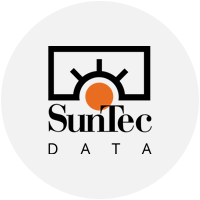
As per IBM, around 2.5 quintillion bytes of data are created each day. These numbers are gradually increasing, as even when you need a piece of information and turn to search engines, you are augmenting the data stockpile. However, when data is being generated in such a huge volume, its management and accuracy can pose to be a real challenge. To overcome the challenge, organizations require specifically skilled resources which imply additional expense and efforts.
Generally, organizations struggle to spare out time to hire resources for data support. Thus, they prefer outsourcing data support services to efficiently manage data. However, the market is flooded with various online data entry companies are trending these days making outsourcing an easy way to save time, resources, and efforts that goes into having an accurate database. Here are 5 points when looking for a reliable data entry company. to ensure that you choose the right company which is capable of handling your project swiftly and efficiently.
Improve Accuracy With Data Entry Services
Data entry is an essential part of data management. All the companies, irrespective of(pl edit accordingly). It requires undivided attention and precision while managing the speed. The proficiency of the whole process would define the quality of data and its impact on all the connected processes and related business decisions. This affirms data entry to be a demanding task where losing attention for even a second may result in inaccuracies in data, upsetting the data system. Although a challenging task, it isn’t a tough nut to crack, if you embrace the 4 primary perks of outsourcing data entry services. Online data entry companies ensure the accuracy of data entries by following the below-mentioned steps among others:
- Specify the sources (both internal and external) of data inaccuracy. Knowing the cause will allow them to be fixed easily and quickly.
- Set data accuracy goals to get authentic data entries, data capture, and effective coding.
- Use software tools like Intelligent Character Recognition (ICR) and Optical Character Recognition (OCR). It significantly reduces the workload by automatically reading and extracting data giving more time to the professionals to analyze and validate the data.
- Use data entry accuracy standards such as data monitoring, geo-coding, matching, linking and data profiling.
- Utilize automated error reports feature to get prompt alerts on entering an error in the data.
Data Cleansing Services To Validate Your Data Entries
However, to further ensure the preciseness of data, data cleansing comes into the picture. It not only validates the data entries but also helps you to clean the data which was once authentic when accumulated but may have decayed after a period of time.
The process involves finding out errors or possible discrepancies in the database and then rectifying it with proper methods and tools. While such tools help in removing the data discrepancies that may have occurred due to typing-error or some glitches in the system software, they also employ state of the art technology that allows a quick and effective process of finding out the corrupt data and fixing them.
Data Quality Services For Seamless Business Operations
Data quality services are a part of data cleansing services which are coveted by organizations because of its direct relation with business value. Quality data is the foundation of accurate business-decision-making as it provides a high integration of data from a variety of sources, well-structured information or values, complete data records and consistent entries from CRM, ERP and other data sourcing systems all at your fingertips. Hence, it becomes important to be sure of the quality of acquired information and check it at regular intervals.
However, doing it manually will not help and may take ages to complete the task. To simplify the task, you can outsource data quality services to experts as they not only have specific data quality tools that automate the entire process but also employ their own expertise to deliver unmatched results.
You will keep on struggling with inaccurate data, leading to delayed operations and poor business decisions unless you take proper steps to keep your database accurate and consistent. Overcome the issues pertaining to your data’s quality and authenticity by dropping a mail to info@suntecdata.com and add value to your data.

.svg)



